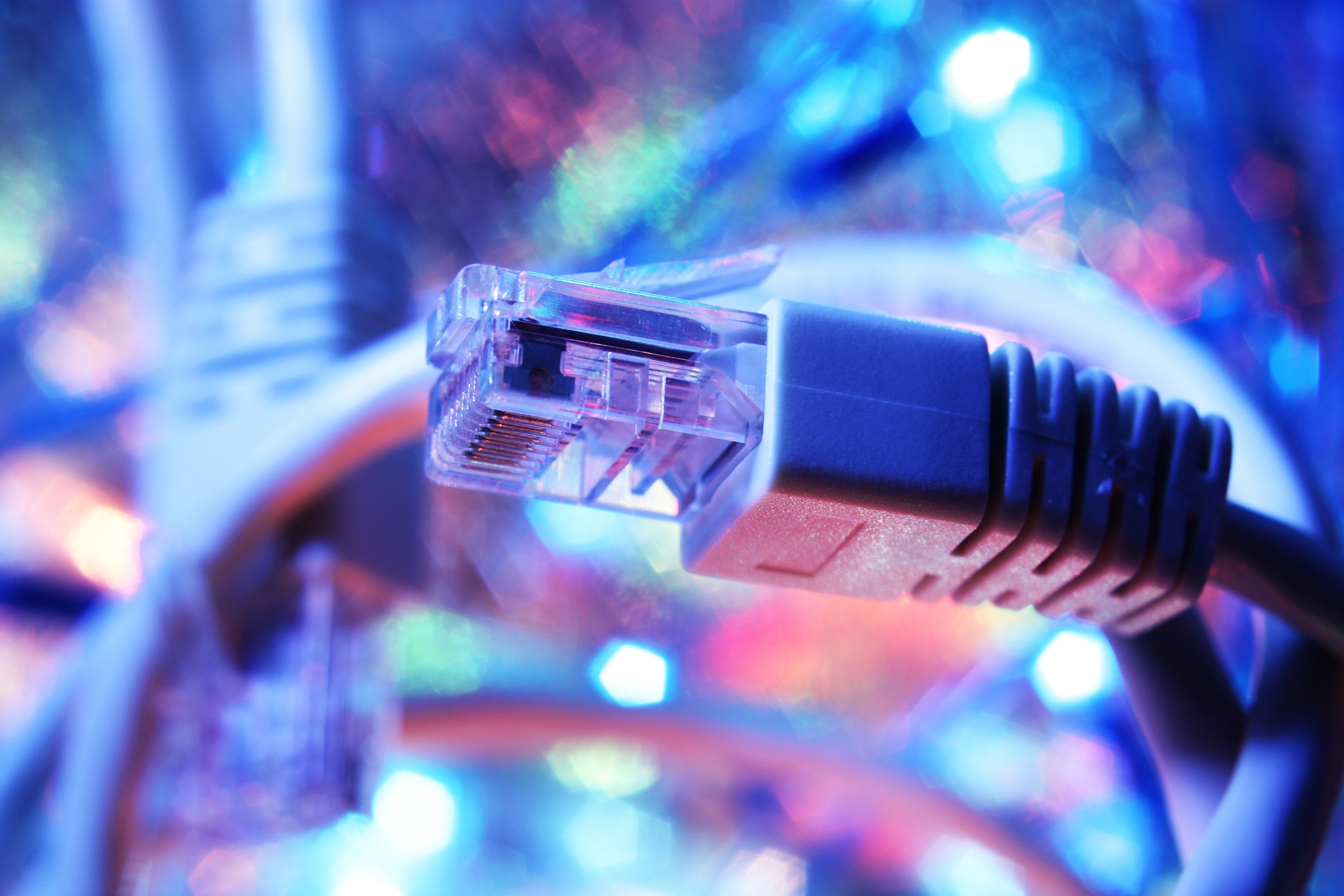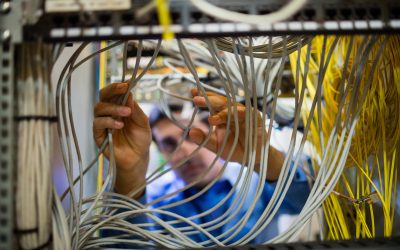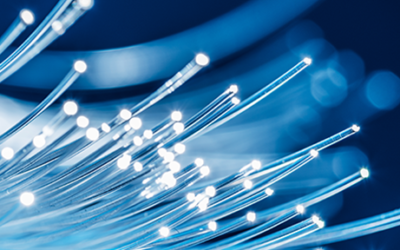Calculating the ROI of Infrastructure

Tags: cabling | fiber optic | Investment | Networks
Often it’s difficult for a network manager to justify to a non-technical management committee the expense of building a high-speed network and it’s related wired and wireless infrastructure. You know it will increase performance, thus saving time and making network users more productive. Productivity, however, is a difficult thing to quantify. Indeed, a high-performance wired and wireless infrastructure may be helpful, even vital, to your organization. But given the reluctance of the powers that be to spend money on anything that won’t show a tangible economic benefit, how do you convince them to approve the expenditures to build one?
The answer is deceptively simple: Put a price on it.
Cost is always an issue no matter what financial position your organization is in. Any management expects that the best pricing and value for money is achieved. However it is important to remember that the use of telecommunications as a strategic resource:
- Increases productivity
- Reduces costs
- Improves the bottom line
Sometimes the benefits are so obvious or overwhelming or the costs of not making the investment are so horrendous, that no analysis need be done. This article, in contrast, focuses on the financial aspects that can influence the decision of whether or not to make a particular cabling investment.
Costs of converting to high performance cabling
High-performance cabling and networking is not cheap, it’s not easy, and consequently it should not be entered lightly without careful planning and allocation of resources. Therefore, before you launch into an implementation project, it is recommended that you:
- Determine what benefits will be gained from your new infrastructure
- Carefully estimate the costs of converting to the new infrastructure
To help you “put a pencil” to these potential expenses, the major cost considerations of a high performance cabling infrastructure are detailed in this section.
To speed or not to speed
Before you can estimate costs, you’ll need to determine which parts of your network you want to upgrade, change or replace, or it may be a green-field site that is being considered. This can be your most difficult planning task, because you’ll want to implement enough to provide you with adequate bandwidth for the foreseeable future, but not implement any more than you can financially justify because of the perceived high costs associated with it.
A smooth road
You need to select the appropriate grade of your wired and wireless infrastructure.
Media migration: Category 5e to Category 6 – to Category 6A or higher?
Today, users looking for high-performance solutions/infrastructure in the wiring closet are faced with three main alternatives:
- Invest in a strategic cabling platform based on a high performance Category 6A RJ45 architecture that has been designed both to serve today’s needs and scale for future requirements that embrace high-speed technology options, or
- Take the middle ground and install Category 6 cabling. It is well-established and widely available, designed to support 1Gbps and offer margin to requirements to improve network throughput, reliability and robustness.
- Make a tactical decision based on an existing Category 5 or Category 5e solution that was originally designed to accommodate 100Mb/s technology.
With wide-scale proliferation of switched multi-gigabit technology and high speed wireless in the workgroup environment, users face challenges in providing multi-gigabit options within the LAN. Acceptance of 10 Gigabit Ethernet as high-speed transport interconnecting the various Gigabit Ethernet workgroups is the natural choice.
Backbone migration: copper to multimode fiber – to singlemode fiber
The backbone network presents the greatest opportunity for optical fiber in the private network. With added bandwidth capability being placed in the horizontal LAN, the case for fiber versus copper cabling in the riser is an easy sell. And for those customers who are looking for additional future proofing, a hybrid multimode/singlemode fiber solution can be offered as a means of investment protection for little additional cost. Due to the hierarchical nature of the LAN and the “funneling” effects of LAN switching, the “need for speed” clearly grows the further one gets out from the user device. The natural evolution for the general business LAN over the next 5 years will involve a migration to switched 1Gb/s at the desktop; switched 10Gb/s capability first at the server interface and then in the building backbone; and finally switched multi-Gb/s, even potentially Tb/s, capability in the datacenter environment. The backbone infrastructure portion will experience a similar migration over the same time period, with high performance copper and wireless strongly positioned as the horizontal medium, multimode fiber gradually moving to singlemode fiber in the building backbone, and singlemode fiber in the campus.
Total and complete cost of ownership
As each building or campus is different, cabling costs are difficult to generalize and are most accurately assessed based on the proposed design/installation/environment. When comparing options, users should consult installation companies and obtain estimates for various infrastructures. These costs can then be assessed and compared against the benefits.
In order to determine the best infrastructure and relative costs to consider in any comparison, each organization must evaluate their application needs, considering the various advantages of each cable type and their relative importance. Cost, ease of installation, moves and arrangements, current and anticipated applications, and the expected life of the system are typically major decision factors. Environmental considerations such as electrical noise and clean rooms may also influence the decision, as well as building type, industry sector, and cabling system ownership.
Organizations must consider and prioritize the following:
- The sophistication of their network applications
- The life expectancy of the network and cabling infrastructure
- The frequency of moves and changes
- The growth potential of their network over its expected life
- Any adverse physical conditions in the customer’s network
The design, architecture and specification of the system should include the following:
- Outlet density and presentation required
- Redundancy
- Patch/jumper density
- Wiring closet/space requirements
- Media selection – copper, wireless and /or fiber
- Media considerations – performance, physical hazards, coverage
- Cable containment including containment types (ducts, cable tray), and containment design (size, safety, segregation)
- Installation techniques and quality
- Adherence to standards
- Labeling, records and documentation
- Testing and certification
When evaluating cost, organizations should always think in terms of cost over the life of the cabling, rather than only the initial installation cost. Also compare the cost to electronic hardware that will be replaced several times over the lifetime of the cabling. The lowest initial cost is not always the cheapest in the long run, however once the contract is placed it is difficult to change. Considering cost should include the following:
- Initial installation cost, ensuring it covers adequately the specification to avoid unwanted extras and performance restrictions
- Administration, the networks ability to be easily and inexpensively reconfigured
- The ability to support ever increasing bandwidth and data rates in the future
- Maintenance, the effort required to keep the system operating
- Life cycle value, the assurance of a warranty covering the applications and hardware
Following the above guidance should result in a complete project cabling cost for any given copper and/or fiber type. These cabling options, and their associated costs, can then be compared to the potential benefits of each option.
Speed Kills: Avoiding A Crash
In the previous section, the cost of a high-performance infrastructure was outlined. Enough guidance is available from many sources to help you determine where – and – whether – you need a high-speed solution. As well, enough information is available about the strengths and weaknesses of each category to enable you to choose one, or at least put together a ‘short list’ of suitable high-performance solutions for further investigation. Now the hard part begins: building the high-performance cabling infrastructure.
First: Trial before you buy
All the vendor promises in the world notwithstanding, before you make your final selection of high-performance wired and wireless products, try and get the products into your network and test them under real conditions, or at least ask for reference sites, independent test reports and technical support documentation. Too many products look great in the sales literature but fail miserably in the real network. Even if the product works out great, you’ll probably uncover a detail or two about integrating it into your network that the sales literature didn’t mention.
Second: Identify the next bottlenecks
As you probably know, improving network performance is simply a matter of moving the bottlenecks around. Right now, your network’s bottleneck may be inadequate device bandwidth. When that is eased, where will the bottleneck be? Will it be underpowered server links? Out of date user devices? Under-specified backbone cabling? At the same time you are making your pitch for a high-speed network, you should tell your management where the next slowdown will be and what will cause it. This will add to your credibility, and save you from discussion that begins, “You said if we put in this high-performance cabling, the network would speed up dramatically! What happened”
Third: Make a schedule
Create a schedule for the project. Determine the order in which the upgrades and installations will have to be done in your organization. Be sure to figure in ordering lead times and delivery delays. Then create a project plan showing dependencies and which steps have to be completed before others can begin. Assign beginning and ending dates.
Fourth: Get your budget approved
Now that you know everything you have to do and buy, how much the cabling options will cost, and how long it will take, it’s time to get your final budget approved. You will get a lot further if you present the request in terms of money it can make or save your company than if you recommend it for convenience and ease of use. Of course, this answer may be simple, but the means to accomplish it is a little more complicated. The task is to pinpoint the economic benefits of the high-performance cabling, calculate its exact cost, and determine whether the benefit justifies the cost. This requires not only technical expertise, but also business savvy and creative thinking.
Fifth: Set expectations
As soon as you complete your implementation plan and schedule for your high-speed network, start setting appropriate expectations for your managers, your users, and your staff. Here are some tips:
- Write an email, hold meetings, post notices, and talk with everyone you meet in the hall about what you are doing and why. Explain it in excruciating detail. Tell them why it is necessary. Be a walking, talking seminar on building your high-speed network. Even though some people may not understand everything you’re saying, they will have an opportunity to grasp the enormity of the undertaking and perhaps be more sympathetic to any difficulties encountered as a result.
- Listen to their concerns about ‘another network project’. Everyone dreads having the network down, and it often seems that every major network upgrade or conversation is followed by a frustrating period of sporadic downtime while working out the ‘bugs’. Some users may be anxious about the network project because they are about to begin demanding projects of their own. You should be aware of these projects and plan network implementation accordingly.
- Be very candid about how long the project will take. You will gain nothing by being overly optimistic. If anything, overestimate the duration of the implementation.
- Let all concerned know where and when you are likely to encounter problems or delays. At the same time, share your contingency plans for meeting important deadlines and keeping the work flowing even when the project isn’t going as well as planned.
- Don’t oversell the expected performance increases. Obviously, you wouldn’t be undertaking the project if you didn’t think it was worthwhile. However, while you should be positive about the benefits of a high-speed network, don’t make anyone expect a miracle.
- Prepare your staff for long hours. Be sure you have communicated very clearly exactly what this project is going to demand of them. Show them the schedule and the task assignments. Be sure everyone is committed to successful completion of the project. Then help them prepare for it.
- Be prepared for cranky users. No matter how carefully and thoroughly you communicate, there will no doubt be a user or two who become frustrated with the progress of the project and lashes out at you and/or your staff. Don’t take it personally (no matter how personally it is aimed) and make sure your staff doesn’t either. Tell them that this is likely to happen, and instruct them to listen patiently to angry users, apologise for any inconvenience, and tell the users what is being done, and walk away.
It’s A Wonderful Thing
The first step to putting a price on the benefit of high performance solutions is to take an objective look at life without the product, past, present and future. Ask yourself what past problems the high-performance infrastructure could have eased.
Next, ask yourself what will – or won’t – happen in the future if you don’t build the new infrastructure, or if you select one solution versus and alternative. Then figure out how that will affect your business.
Then, develop an effective business case on your selection based on ROI, Return on Investment. When someone asks about ROI, they are really asking:
What do I get back (‘return’) for the money I’m being asked to spend (‘investment’)?
What is it really worth (the “ROI”)?
Traditionally, when network managers and top-management discuss the ROI of an IT investment, they were mostly thinking of “financial” benefits, often also referred to as “hard” benefits. Today, business leaders and technologists also need to consider the “non financial” benefits of IT investments, also referred to as “soft” benefits.
Calculating the Cost of Downtime
Most IT managers suspect that downtime costs a ton of money. They have a sinking feeling that money is draining from the company coffers every time a server crashes, an Ethernet switch flashes yellow and then goes dark, or a service provider sends a courteous e-mail a week after a network link went down. They are right. That is the bad news. Most organizations don’t know where to start, or exactly how to go about fixing problems when they find them.
There are 2 types of downtime: degradation, when a service is slower than usual, perhaps to the point of being useless, and outright outages, when a service is unavailable. The second is usually more serious than the first (although both cause productivity loses), but not always: a customer accessing the enterprise Web site may forgive—once—finding the site unavailable, but become so frustrated at a slow-responding site as to leave in a huff and never return.
If you look at most corporations, PEOPLE are the biggest cost in the portion of the value chain they serve. If the network is down, there is a real cost due to lost productivity for people on the network. By reducing downtime and hence increasing uptime, substantial benefits can be realized per year from increases in employee productivity and the subsequent revenue improvement linked to that.
Now It’s Showtime
You’ve gathered your facts, found the costs and shortcomings in your own solution, addressed the holes in your own logic and built a case based on economic need and common sense, it’s time to prepare your presentation. Start by telling your management how much the high-speed network will save the company. Then give your example of a past project that would have been done more cost – effectively if the high-speed network had been in place. Next, present the worst – case scenario if the network isn’t built, then conclude with a step-by-step explanation of the analysis you used to arrive at these conclusions. Finally, just in case your arguments sparks enthusiasm, it’s a good idea to have a high-level implementation plan on hard to give your management an idea of what will be involved.
You Can’t Always Get What You Want
Your analysis has either produced a sound, justifiable and hopefully unassailable case for building a high-speed network, or a reasonable explanation of why the project just isn’t feasible. In either instance you win. Understanding why a purchase doesn’t just make business sense will build your credibility with your management just as much as knowing when it does. It also makes you aware of the types of systems and pricing that will make sense.
This exercise will also give you more than a business case for building a high-speed network. It will help you gain a broad perspective on how your network fits into your organization. It also encourages constant, close communication with other departments and an understanding of how they use the network and information about the network. This is the kind of perspective that will not only make you a better network manager, but also serve well throughout your career.
Surviving Speed.
This article sounds more like you’re preparing for war than for a 10G cabling upgrade. However, it’s not meant to scare you away from building new infrastructures. In fact, it’s aim is to ensure that you come away from the project with a high performance network and an intact career. The secret to successful implementation is
- Doing your homework and carefully selecting which products to implement where
- Carefully planning and scheduling the tasks and expenditures
- Preparing your staff, your users and your management
Learn more about planning for network infrastructures at the Cabling Science Institute.

Written by James Donovan
You might also enjoy
FO Connector Contamination – A Constant Threat
Fiber optic communication most commonly works in duplex or multifiber transmission by transmitting light to a receiver in one direction on a fiber and receiving transmitted light back to a second receiver on the second fiber. Most engineers can understand that and...
Why Inspect and Clean Fiber Optic Connectors?
Inspecting and cleaning of fiber optic connectors during installation and when making any patching, is essential. Any contamination on a patch cord connector will be transferred through the coupler to the connector it is mated to. Even when testing fibers with a test...
Cleaning MPOs
MPO connectors should always be inspected with a scope before they are used, be that on a patch cord or a bulkhead. If they need to be cleaned, one-click cleaners are keyed to ensure the tip only fits one way onto the connectors and is able to clean both male and...


